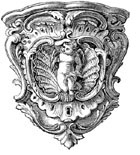
Integrated Art: Expressions of a Deified Reality
GUEST COLUMN
Driven by His inestimable love for man, the Son of God assumed a mortal nature, which granted Him a threefold love for mankind. That is to say, Christ loved with a divine will, a human will, and true human affections. Ever engaged in the creative act of love, His powers were perfectly realized, ordered for the glory of the Father and the good of mankind. In Christ, man is met with the most profound and integrated of loves, which endlessly invite imitation and recompense.
That we may follow Christ’s example and obey His command to love God with our whole heart, soul, mind, and strength, we must realize our own powers to love, integrating them into and submitting them to the divinizing fire of the Godhead. Deeply assimilated, this love must overflow into outward expressions of every kind; for what love does not seek to declare itself in a thousand ways, striving to make itself known? These professions of devotion, manifest in every art, form the building blocks of culture.
If this is so, we must ask if modern culture reflects this mature and flourishing reality. If so, it would speak to the spiritual development of individual members of the Church. If not, we must acknowledge a cultural dearth that demands a re-examination of our approach to our own humanity and to Christ’s divinity. For love is ever active, and its fruit is manifest in countless signs of its invisible presence, corresponding with the twofold nature of man as body and spirit.
Christ, the exemplar of man, poured forth praise in many forms of art. If we are tempted to imagine Him stoic, the Gospels correct us on that point. The Evangelists describe Him as fully alive, expressing love in word and deed, silence and song, parable and liturgy. In this sense, Christ perfects the human avenues of communication, manifesting charity in the literary genre of storytelling (cf. Lk. 15), in the musical form of hymns (cf. Mt. 26:30), in the recitation of verse (cf. Mt. 27:46), in the preparation of communal meals (cf. Jn. 21:9), and in the mystery of liturgy (cf. Lk. 22:15).
You May Also Enjoy
There is something undeniably bittersweet about the sublimation of a distinct culture into the flat, American consumerist anti-culture touted as an improvement.
Even atheists understand the search for a lost wedding ring as a rational act that goes beyond strict economic value.
What was considered the best of various European missals came together in the Pontifical Romanum (1595), which became the norm for the Roman rite.

